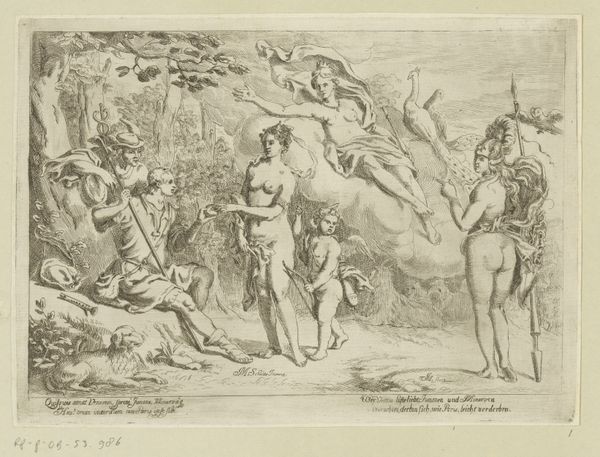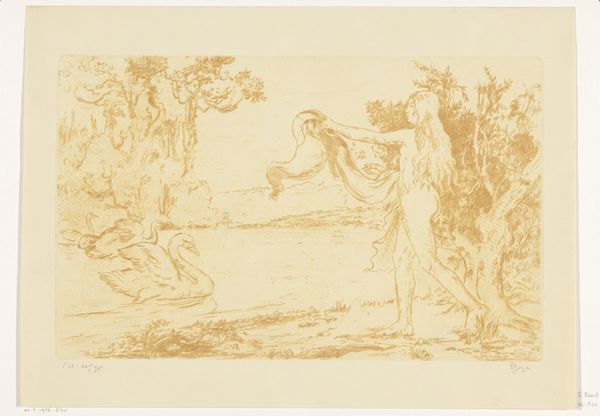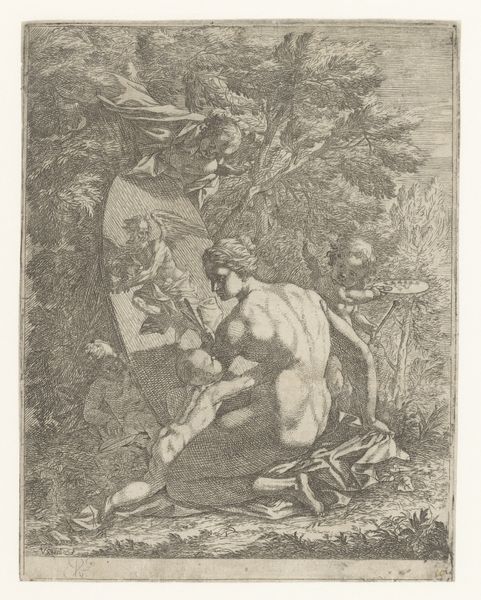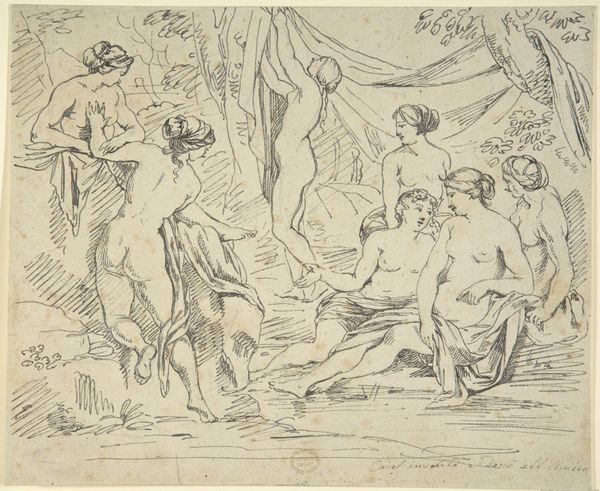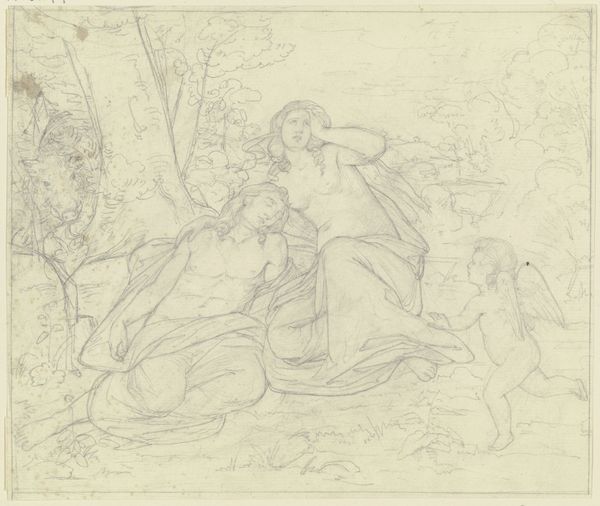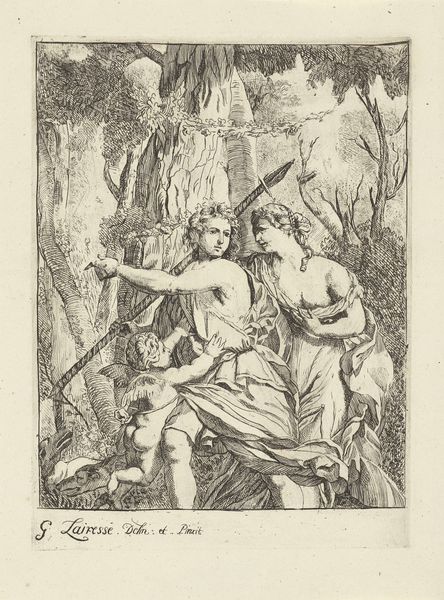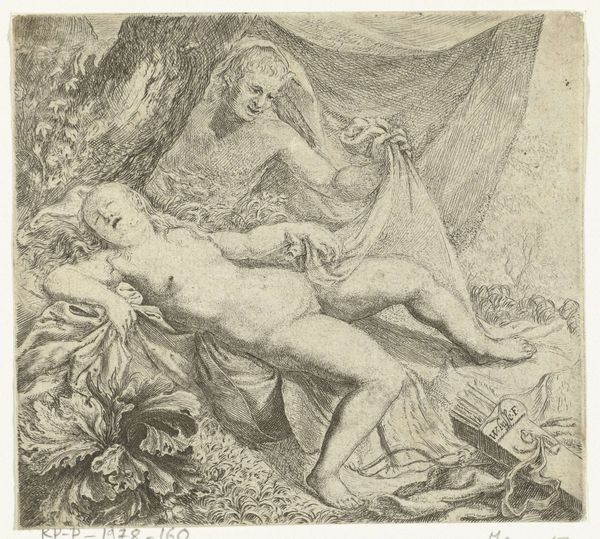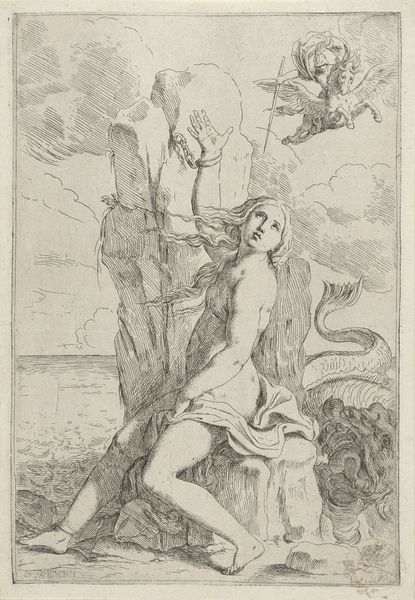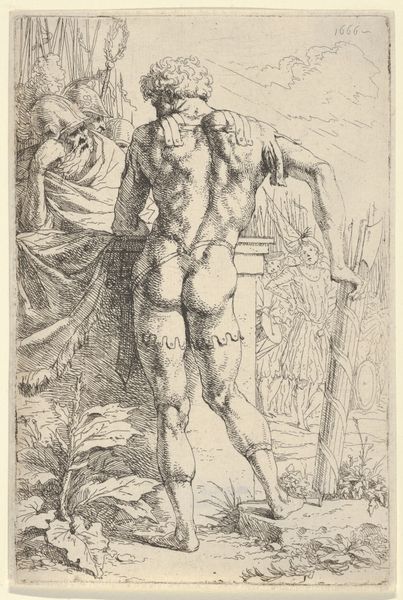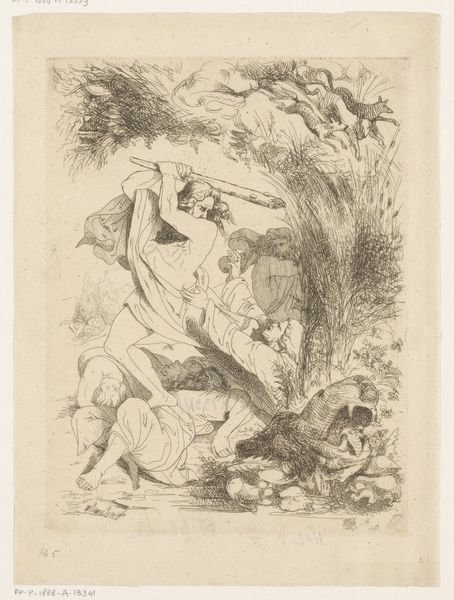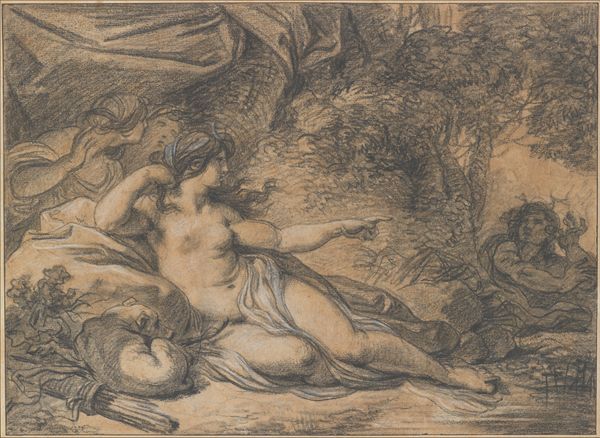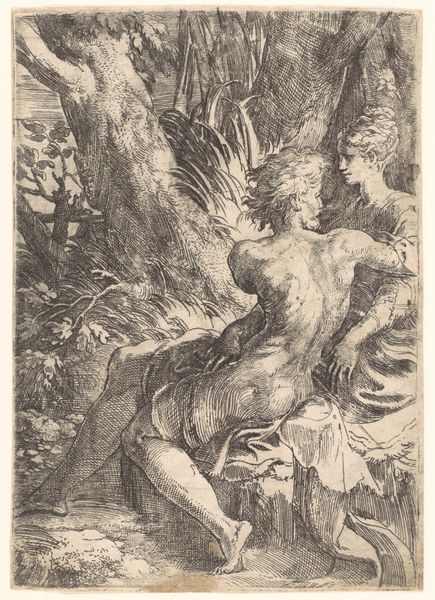
drawing, print, engraving
#
drawing
# print
#
landscape
#
figuration
#
11_renaissance
#
female-nude
#
men
#
history-painting
#
italian-renaissance
#
engraving
#
male-nude
Dimensions: Sheet: 7 7/8 x 10 3/4 in. (20 x 27.3 cm)
Copyright: Public Domain
Curator: This engraving, attributed to an anonymous artist and part of the Wilton Album, is titled "Priapus and Lotis." It likely dates from between 1525 and 1555, placing it firmly within the Italian Renaissance. The scene depicted draws from classical mythology, specifically the tale of Priapus's lustful pursuit of the nymph Lotis. Editor: Immediately, I’m struck by the starkness of the composition. The figures are rendered in incredibly fine lines, and this emphasizes the contortions of their bodies, especially Lotis transforming into a tree. The almost frantic energy creates a certain discomfort. Curator: Yes, the discomfort is telling, given the historical context. Representations like these weren't purely aesthetic; they were often tied to broader societal concerns about morality, lust, and the consequences of transgression, especially among the aristocracy where such imagery was consumed and debated. This imagery reflects and reinforces those societal values. Editor: I’m also drawn to the landscape itself. It’s not just a backdrop, it’s almost a participant in the drama. The densely etched foliage contrasts sharply with the smooth skin of Lotis, amplifying the sense of her transformation, becoming one with the rough bark of a tree. This formal tension gives a tactile feeling to a terrible mythological scene. Curator: Precisely. This particular engraving might also function as a commentary on power dynamics. Priapus, a symbol of ungoverned desire, pursues Lotis relentlessly. That this engraving exists within the larger context of an album also indicates a certain status and potential uses of art within society, possibly of education and discourse, or perhaps just for personal delight or amusement, by certain elite segments of Renaissance culture. Editor: I agree. The use of engraving lends a crispness and precision to the image that enhances the feeling of both urgency and confinement. The absence of color forces our eyes to examine every line, to dwell on the minute details of form and expression. The figures don’t recede from the plane. Curator: What strikes me most is the artist's engagement with a complex narrative in a relatively limited space, suggesting that this wasn't just an artistic exercise but a commentary on larger questions of power, sexuality, and transformation within Renaissance culture. Editor: Looking at it now, I am struck at how successfully the composition creates such a vivid moment. A permanent capture of transient terror and change!
Comments
No comments
Be the first to comment and join the conversation on the ultimate creative platform.
